Firefighters worry as New Jersey wildfire threat grows. Are we doing enough to stay safe?
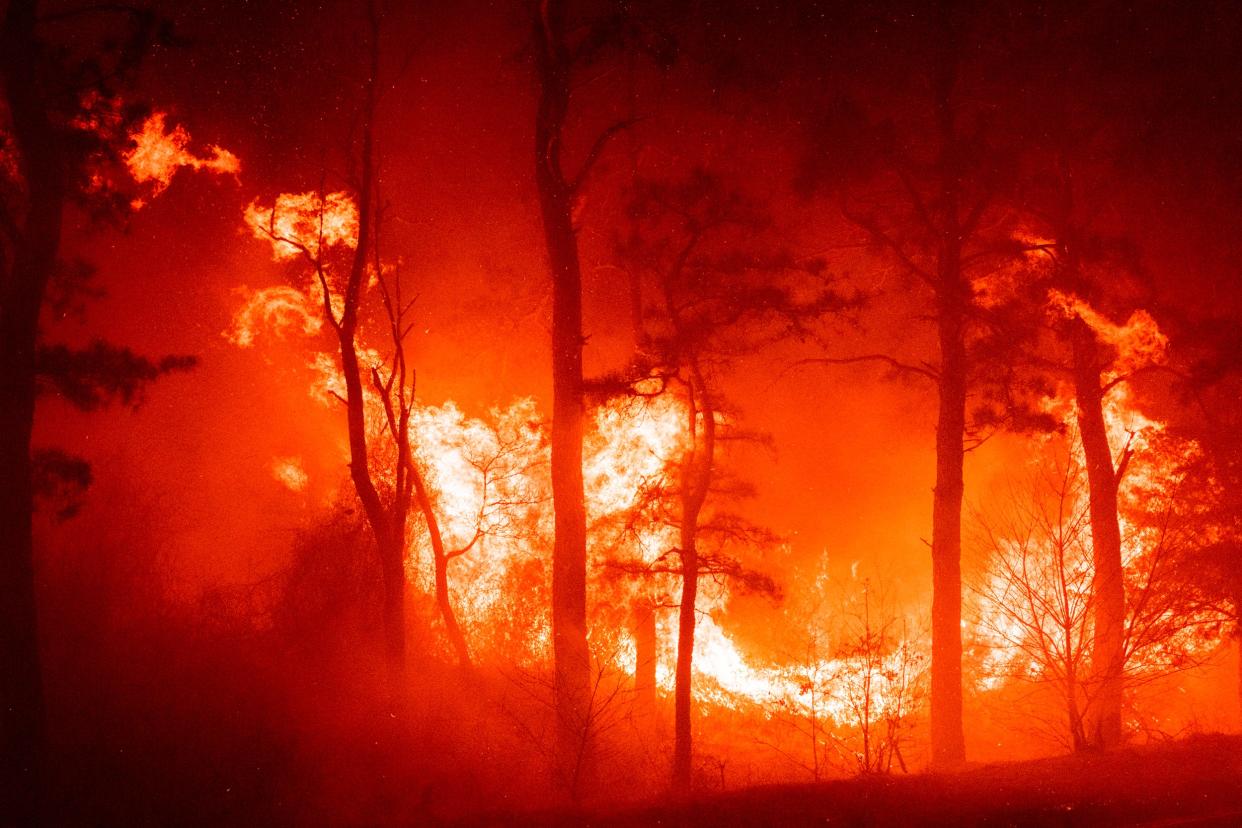
Walls of flames moved through New Jersey forests toward suburban neighborhoods in a rash of wildfires that consumed thousands of acres of forest through the first half of the year. Blaze after blaze, fueled by an unusually dry winter and spring, burned more of the state's natural lands than in the previous two years combined.
When the flames were not licking at trees near homes, smoke from Canadian wildfires blanketed the region and triggered air quality alerts across the state.
Since the start of April, homeowners in and around the Pine Barrens have smelled smoke or watched haze cloud streets, neighborhoods, even the beach.
It will be a year remembered for wildfires.
Since the beginning of the year, 930 wildfires scorched 16,461.75 acres across New Jersey, up nearly 30% compared to the previous year, according to statistics collected between Jan. 1 and July 17 by the New Jersey Department of Environmental Protection. That is more than double the acreage typically burned across the state in a typical year, according to the state agency.
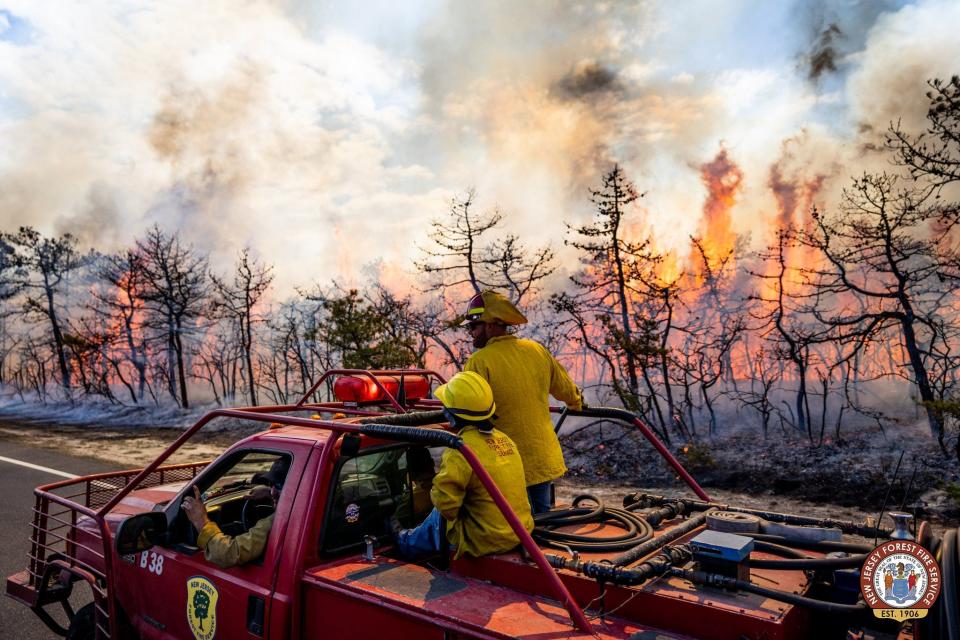
About half of New Jersey's residents live within the "wildland-urban interface," an area where homes and forest are in close proximity and the threat of wildfire is a risk, according to the DEP.
By the beginning of summer, firefighters found themselves battling a seemingly never-ending eruption of blazes in the woodlands across the state. A major forest fire in Manchester and Lakehurst threatened homes and buildings and consumed more than 3,800 acres of Pinelands. Just days later, more than 1,600 acres of pine forest burned in a rural part of Little Egg Harbor.
The season didn't stop there. In Passaic County, a wildfire in West Milford burned nearly 1,000 acres before it was extinguished. By June, the Forest Fire Service was back in Ocean County, battling an 82-acre fire in Jackson that scorched woods behind houses in a leafy neighborhood on the western side of the township.
Firefighters faced fatigue as week after week of wildfires ignited and raged across the state.
In early June, New Jersey Forest Fire Service Chief Greg McLaughlin said in Jackson as firefighters fought flames near Pamela Court: "It's been a long season. We've had nine major wildfires this season: major wildfires are fires that we consider to be 100 acres or larger. In a typical year… we would normally see four or five major wildfires."
In other areas of the country, insurance companies announced they would stop issuing policies in some of the most fire-prone communities in the nation, such as in parts of California and Utah.
That same week that firefighters were extinguishing embers in Jackson, State Farm and Allstate announced they would stop issuing new home and commercial insurance policies in California in light of increasing wildfire risks and rising rebuilding costs.
In New Jersey, too, wildfire is an "increasing threat" to homeowners, according to the Forest Fire Service.
"You could be a mile away from the wildfire, but we know that embers can travel up to or more than a mile," said Christine O'Brien, president of the Insurance Council of New Jersey, which represents the state's property and casualty insurance providers.
Despite the active wildfire season, New Jersey was spared the kinds of home and business destruction seen in places like California and Canada. But that does not mean Garden State residents should pass on having insurance that includes wildfire coverage, O'Brien said.
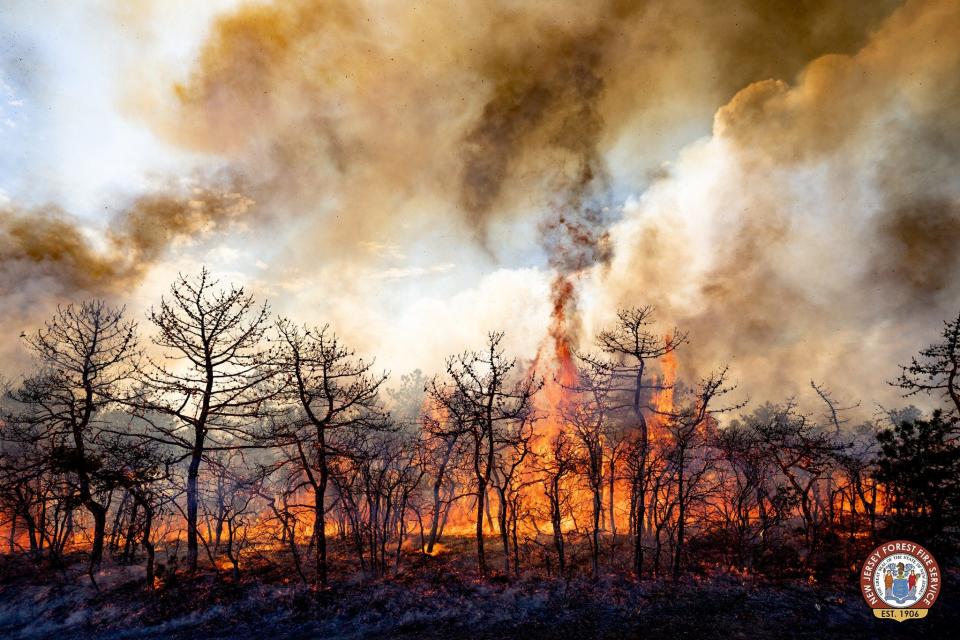
"You are protecting your greatest assets: your home, your property, your car," she said. "We suffer the most when we don't have enough coverage."
Natural disasters can temporarily drive up prices for labor and materials and create shortages of both, O'Brien said.
"You want to make sure that you have enough coverage to match any potential uptick in expenses or… natural inflation that is incurred during those type of losses," she said.
Warmer, drier forests
New Jersey Forest Fire officials say the length of the state's wildfire season has expanded in recent years, and now stretches earlier into winter and later into the summer months.
Typically, New Jersey's wildfire season runs from mid-March to May, but state fire officials say serious wildfires have also erupted in February and June in recent years as weather patterns shift over time.
Over the past century, the state's average temperature warmed nearly 3 degrees, leaving summers longer and hotter and winters shorter and warmer than in the past, according to Rutgers University's Climate Change Resource Center.
These higher temperatures make ignition of the forest easier.
"We know that we are warming in New Jersey," said David Robinson, New Jersey's state climatologist at Rutgers University. "It's well understood that when you have a warmer atmosphere, and a warmer surface for that matter, you have more evaporation, (because) the atmosphere can hold more water vapor. So it can… suck it (moisture) out of the ground, and out of the debris on the ground, and out of the vegetation itself."
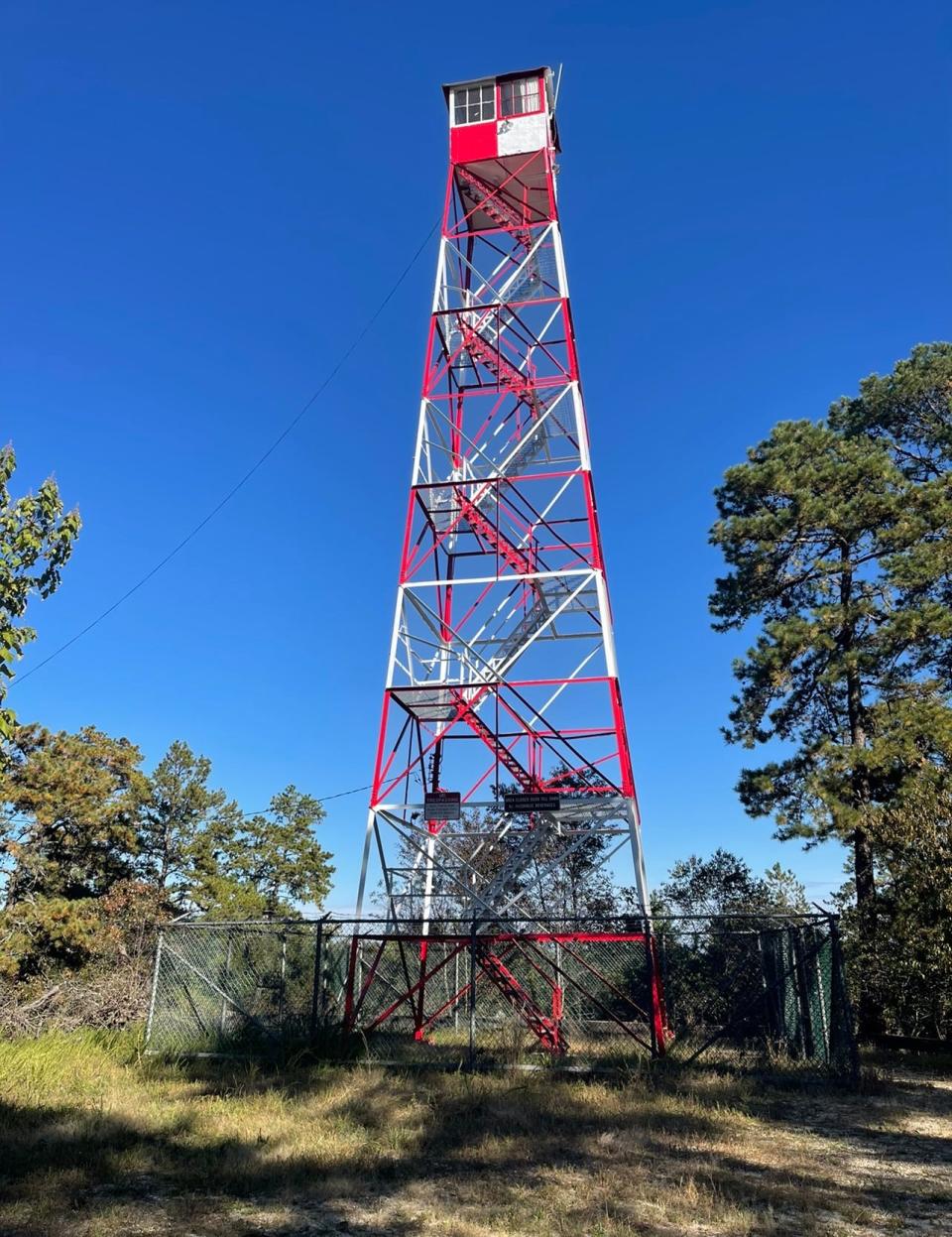
The drier and warmer the conditions, the easier the chance that any flame could spark a forest fire, experts said.
New Jersey's climate also appears to be shifting toward longer dry spells interrupted by short bursts of heavy rain, Robinson said. These longer dry spells can create problems within the state's forests, he said.
"Within weeks during the warm season, you can get into minor and potentially major drought conditions," Robinson said.
Yet those dry spells could be balanced by an overall increase in total rainfall across the state, he noted.
"We may be seeing more of this variability that may be keeping us from developing long-term drought, but certainly it's making shorter-term (drought) episodes pretty common," said Robinson, adding that more data is needed to see if this trend sticks into the future.
NJ forests need fire
Despite its threats to human life and property, wildfire plays a necessary — and in some places, essential — role in maintaining healthy forests, said Kristen Meistrell, vice president of stewardship at New Jersey Audubon, one of the state's leading environmental organizations.
Many people think of forests as dark, mossy places with towering trees, but that is only one type of a variety of healthy forest models, Meistrell said. A truly healthy forest includes variety, with some breaks in the canopy to allow shrubs and grasses to flourish, trees of varying ages, and trees that can access enough resources to grow tall and strong, she said.
Too often, New Jersey forests have trees of all the same age, are crowded and monotonous throughout, Meistrell said.
But New Jersey forests were not always like this, she added.
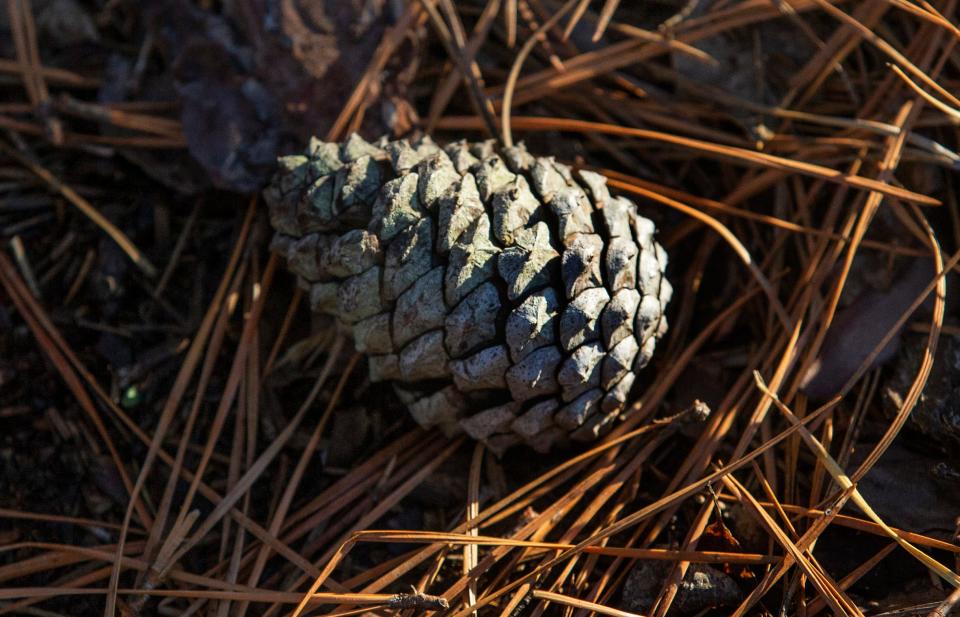
Indigenous Americans used the forests of the mid-Atlantic before European settlers arrived and cleared wide areas for hunting and agriculture, she said. When early settlers arrived, they also cleared woods for agriculture or burned portions to make coal for industry, she added.
"In New Jersey, most of the forests have been cut down, at one point or another," she said. "There are very, very few places in New Jersey that had never been cut during that timeframe (in the 1700 and 1800s)."
But in the 20th century, New Jersey residents began to think differently about their forests, said NJ Audubon's vice president of stewardship. With the growth of the environmental movement came on emphasis on preserving woodlands around the state from industry and development, she said.
"Now it's… protect it at all costs, and do nothing with it," said Meistrell, adding that the philosophy can actually do more harm than good for New Jersey ecosystems.
The result are forests that are very much the same across wide swaths of New Jersey: the same trees, the same habitat, the same age of the forest, for miles and miles, she said.
"It's sort of like we're loving our forests to death," said Meistrell. "We are protecting them so much that we're not helping them along."
Yet some of the state's forests are dependent on fire, like the Pinelands. Here, wildfire helps to open pine cones for seed dispersal and eliminates competition from oaks and other tree species. Older, mature pitch pines, with thick and fire-resistant bark, evolved to withstand these fires. The fire also protects mature pines from competition for resources from smaller saplings that succumb to the flames.
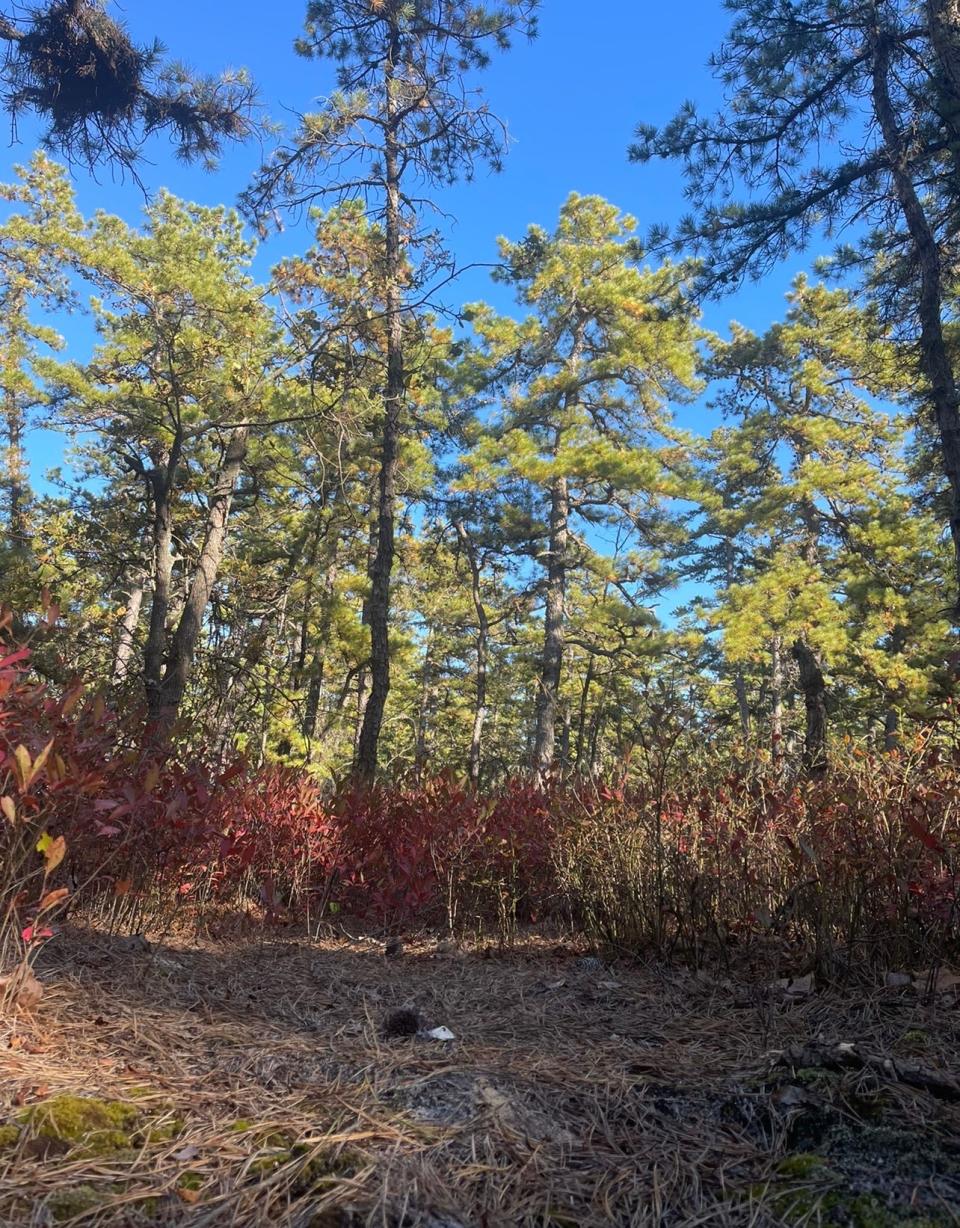
But even in the state's less fire-dependent forests, flames played a role in shaping healthy, diverse ecosystems, said Meistrell.
"In southern New Jersey, the fire would come around… on average, (every) six to 12 years," Meistrell said. "In northern New Jersey, fire would come through every… 25 years (on average)."
But suppressing the wildfires over decades has resulted in a lack of forest diversity, which makes New Jersey's woods more vulnerable to threats like invasive insects, harsh weather or hurricanes, she said.
"We can't have a population of anything that is the same age, because at some point, everything will die at the same time," Meistrell said. "That's not a great future for our forests."
To help the state's forests reach a more healthy state, New Jersey Audubon advocates for thoughtful, precise forest stewardship, or selective thinning. The concept in similar to types of gardening: by removing some small, young and diseased trees, the remaining trees have more room, sunlight and soil resources to grow stronger and larger.
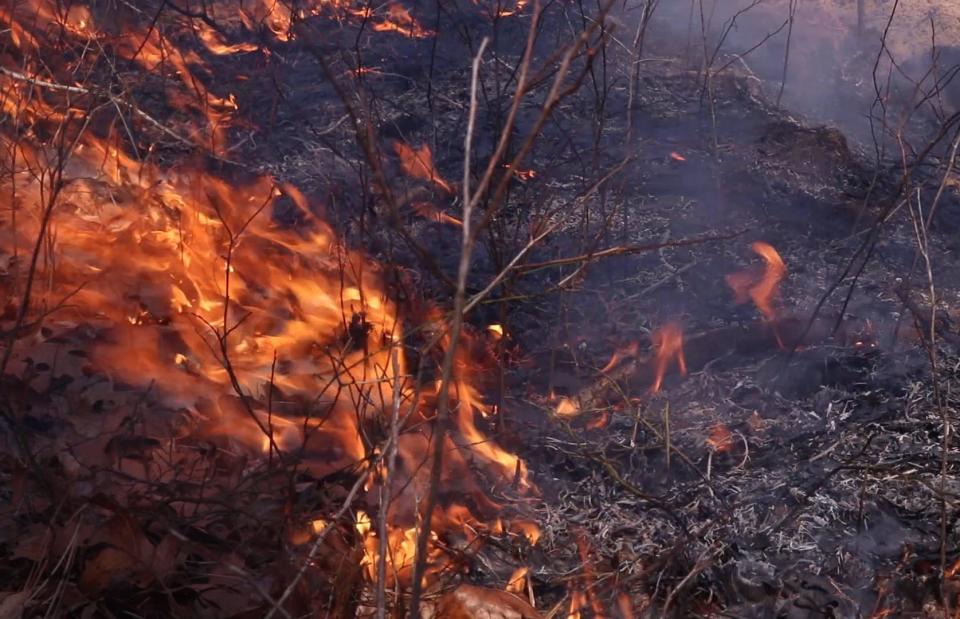
As a byproduct, thinning the forest canopy can create clearings and other spots of habitat diversity. That helps animals and birds that need areas like meadows and shrublands at different point in their lifecycles to survive, Meistrell said.
But when New Jersey environmental officials last year proposed cutting down 2.4 million trees in Bass River State Forest to help prevent future wildfires, the proposal divided environmentalists, according to the Associated Press.
"I think it’s a bad precedent and goes against the state’s mandates with regard to climate change," Pinelands Commissioner Mark Lohbauer said in an interview with NJ Advance Media in December. "We have a state law in place, the Global Warming Response Act, that require us to do our utmost in terms of protecting sources of sequestration of carbon."
State officials said the density of trees in that section of Bass River State Forest was four times as thick than what is typical in the Pinelands, according to the Associated Press.
Meistrell acknowledged that cutting down trees in protected forests remains controversial in New Jersey.
"Even in the Pine Barrens… it (selective thinning) is not happening at the scale it needs to be happening in order to make sure that the forest is healthy, and that our community is protected," she said.
Homeowners at the helm
Such disagreements on forest management have left homeowners and neighborhoods to plan for wildfire protection.
According to the New Jersey Department of Environmental Protection:
So far in 2023, 930 wildfires have burned 16,461.75 acres across the state.
In 2022, 1,175 wildfires burned 12,664 acres statewide.
In 2021, 946 wildfires burned 1,972.25 acres statewide.
From 2012 to 2022, New Jersey on average experienced 946 wildfires annually, burning 5,260 acres.
The fires inspire communities to prepare for the next big blaze. Across portions of southern Ocean County, "firewise communities" trained in homeowner fire reduction hold meetings with neighbors on the importance of keeping shrubs, leaf piles and debris away from homes and gutters clear, especially in spring when the risk of forest fire is highest. Firefighters perform prescribed burns to reduce vegetation along major highways and near homes and business. State officials fund fire breaks in the forest where dense trees abut to suburban sprawl.
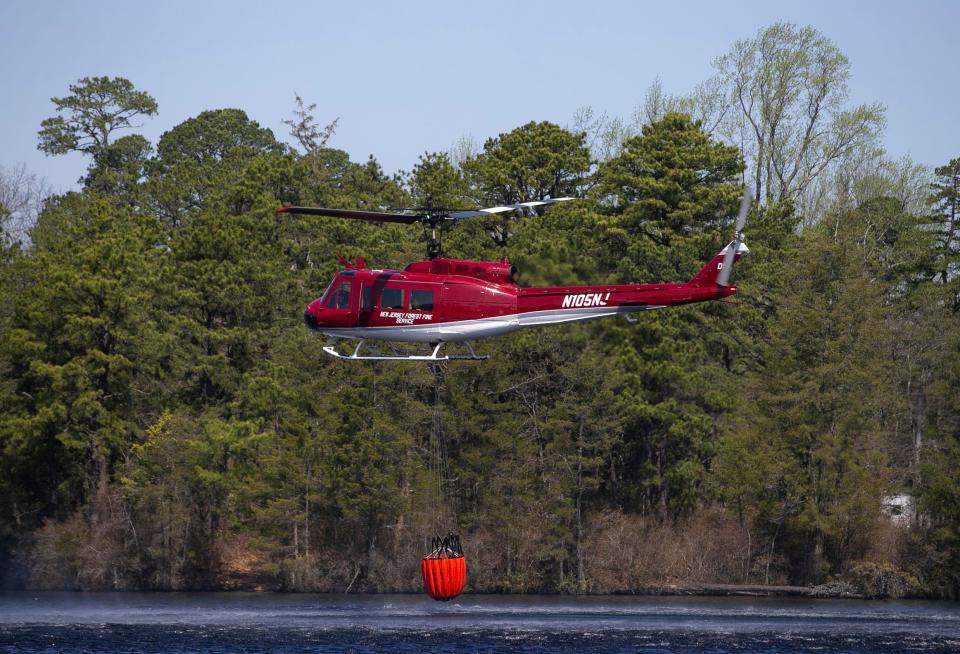
For the time being, insurance experts say New Jersey homeowners are not likely to have trouble buying policies that cover wildfire, even as major insurers slowly pull out of fire-prone communities in the western United States.
"The big thing that's different between California and New Jersey, for instance, is that the wildfires in California… went into densely populated areas like Santa Rosa," said Michael Barry, spokesman for the Insurance Information Institute, an organization that provides data and information about the property and casualty insurance markets.
"That changes the calculation for home insurers, because now all of a sudden, it (wildfire) is not something that's occurring out in the wilderness where there's only a few homes," Barry said.
In New Jersey, and unlike in California, no largescale destruction of homes and structures has happened, despite the blazes, he said.
If that changes in future wildfires, New Jersey homeowners may begin to see hiking rates for insurance, said Loretta Worters of the Insurance Information Institute.
"A big problem we're seeing is more people are moving into these fire prone areas," she said. "So more homes are in harm's way, combined with rising costs of repairing or replacing those houses, so that's all leading to increased insured losses."
Between 2016 and 2020, the U.S. government spent $2.5 billion annually on wildfire suppression on federal lands, according to the Congressional Budget Office. The federal government spent another $5 billion over that timeframe on fire-related disaster assistance.
As of 2020, government officials estimate that about 49 millions homes exist in the nation's wildland-urban interface, where forest fire risk is an annual threat.
Amanda Oglesby is an Ocean County native who covers education and the environment. She has worked for the Press for more than 15 years. Reach her at @OglesbyAPP, aoglesby@gannettnj.com or 732-557-5701.
This article originally appeared on Asbury Park Press: As NJ wildfire threat grows, are we doing enough to stay safe?

